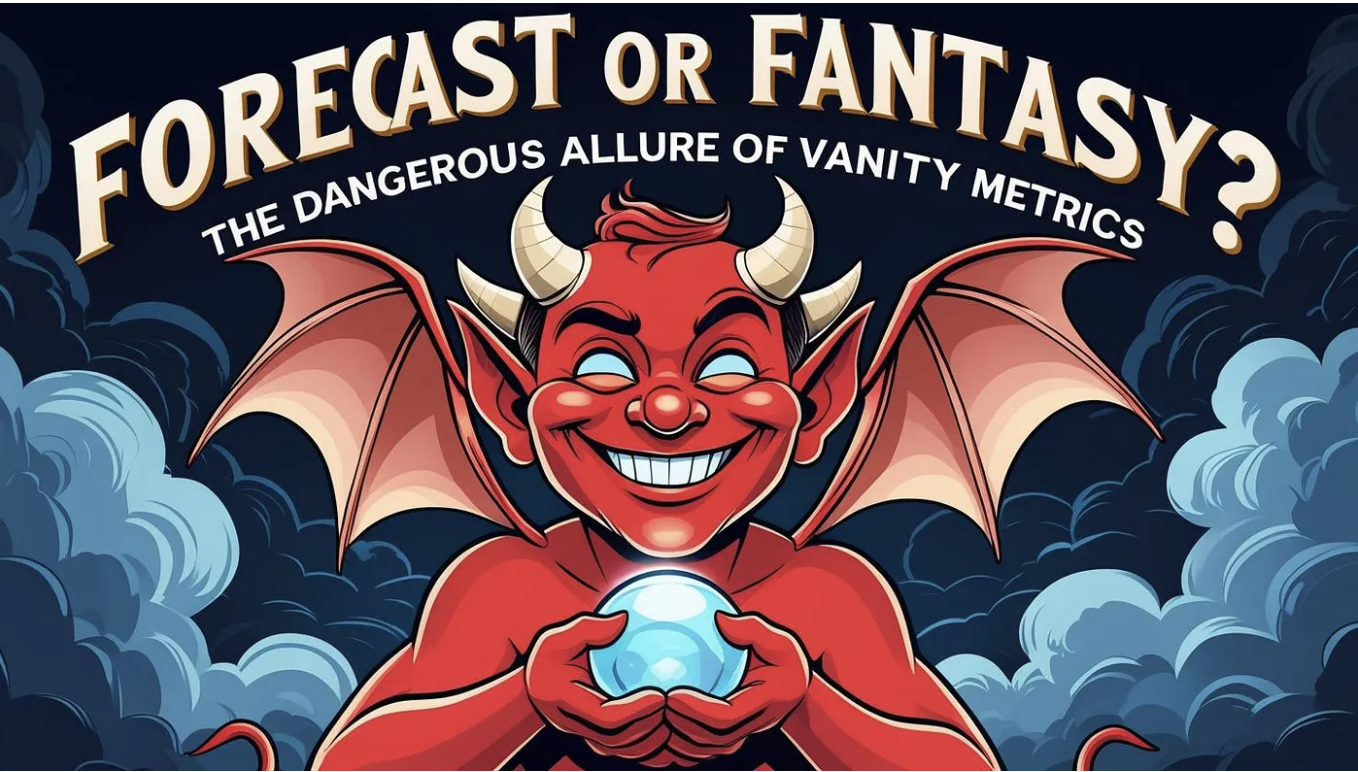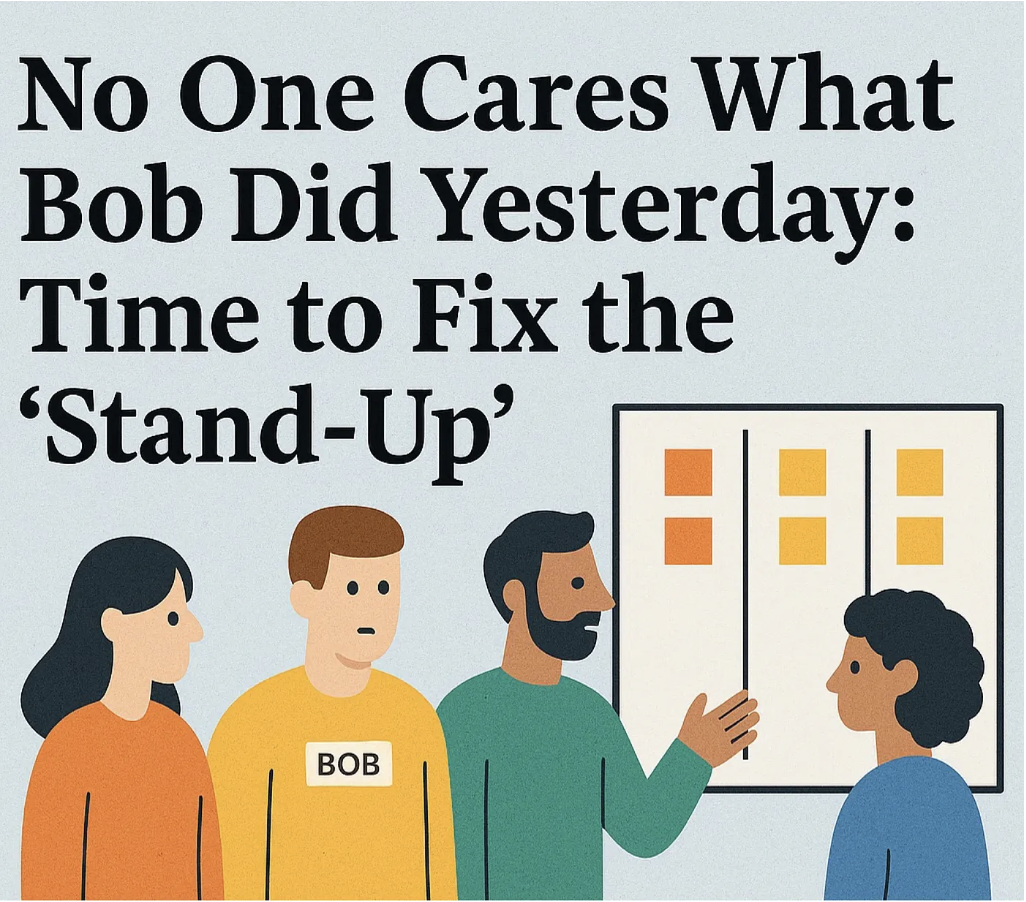No One Cares What Bob Did Yesterday: Time to Fix the 'Stand Up'
Back in the day, Scrum was the framework of choice. At 9am each and every day, I would wander down to the chosen area with my team, and we’d stand around the whiteboard for our “stand-up.” While the correct term is Daily Scrum, I don’t recall anyone actually using that phrase. And why would we, when it was all about “standing up” – right? It still makes me chuckle when I think back.
Dailies, Stand-Ups, Daily Scrum – whatever term you use to describe it, it’s traditionally a daily meeting where a Scrum team comes together to discuss how they’ll make progress on the sprint goal. For simplicity, I’ll refer to this event as a “stand-up,” purely because I find it hard to apply a one-size-fits-all label to it – and that’s largely due to one factor:
It’s All About the Frequency
In the world of Scrum, the Scrum Guide is pretty clear – the Daily Scrum takes place every day as a 15-minute time-boxed event. But you don’t have to be using Scrum to hold a stand-up. And of course, you don’t actually have to stand up. The sky’s the limit when it comes to this kind of event. The frequency should depend on your context:
- Are you focusing on story-level or feature-level work?
- What’s the maturity of your team?
- What’s the pace and complexity of the work?
There’s a lot to consider. I know of some teams who choose a hybrid approach – combining face-to-face check-ins with chat group updates. If that works, great!
So, Is a Stand-Up Mandatory?
Not at all. Unless you’re running Daily Scrums as part of the Scrum framework, I’d suggest asking: What is the benefit of holding a regular check-in like a stand-up? In a workplace already saturated with meetings, it shouldn’t be “just another meeting.” It needs to be useful. If it’s not, try something else.
Do Stand-Ups only belong in Scrum?
Nope. Whether you’re working in Scrum, Kanban, or a hybrid model, regular team check-ins can be hugely beneficial – if they’re tailored to the team’s needs and regularly reviewed to ensure they’re still providing value.
Personally, I find a regular team catch-up incredibly useful – as long as it’s done well, built for the team, and continuously adapted.
Whether you choose to run a stand-up, sit-down, walk-and-talk, or something entirely different, it’s worth asking:
What are we trying to achieve?
I’m a big advocate for doing what’s right for the team and the business – not just following rituals for the sake of appearing agile. That word gets thrown around far too often for the wrong reasons.
What Aren’t Some of the Benefits of a Stand- Up?
Before we talk about what’s beneficial, it’s worth reflecting on what isn’t.
Let’s rewind to my 9am stand-ups. We’d gather around the whiteboard with a bunch of user story cards. From memory, the cards were mostly just titles – unless it was a bug, in which case someone had drawn a little spider in the top-right corner. (I’m pretty sure that someone was me.)
At 9am sharp-ish, the stand-up would usually begin with the person closest to the board. The Scrum Master would ask the same three questions each day – so once asked, all that was needed was a glance to the next person:
- “What did you do yesterday?
- What are you doing today?
- Do you have any blockers?”
With a zombie-style monotone response, each team member would answer while everyone else silently counted down the 15 minutes, eager to get away as soon as possible.
If someone was off sick or on holiday, their work wouldn’t get mentioned – it just sat there, aging like an old banana. Beneficial it was not.
No one really listened. Why? Because the meeting was focused on individuals – not on how we, as a team, would progress the work and the goal.
I have no idea where those three questions came from. They aren’t in the Scrum Guide. A bit like story pointing, they just seem to exist.
Over time, the literal stand-up evolved into a virtual sit-down. Instead of eye contact from the Scrum Master prompting the next update, Jira filters took over. I imagine many of us have been there. Thankfully, things evolve.
So, What Is Beneficial?
For me, it’s all about flow – using the session to discuss collectively how we’ll move forward as a team:
- What’s our agreed plan of action to meet the goal?
- Are we pairing? Swarming?
- What do we need to move forward?
- Who do we need involved?
- What’s blocking flow?
- Is there a bottleneck in our system?
- Are we monitoring work item age?
- Are we approaching our SLE?
Before we get too far ahead of ourselves, it’s worth doing a quick check-in on some fundamentals of flow that can help set us up for success in our stand-ups.
Pull Over Push.
Is our system designed to pull work when we have capacity, rather than having it pushed onto us? Having clear and explicit team-agreed policies can help here – such as WIP (Work In Progress) limits – to ensure we’re not taking on more than we can effectively handle.
Service Level Expectation (SLE).
This isn’t just a way to answer the all-important question, “When will it be done?” – it’s much more than that. The SLE is a powerful guide for setting focus and priority during stand-ups. It’s like the low fuel indicator on your car’s dashboard: it lights up to warn you before a real problem occurs. Our SLE does the same, giving us an early signal when there’s an issue with flow. Sure, we could choose to ignore those warnings – but doing so puts the delivery of our work at serious risk. If we’re approaching or have breached our SLE, it’s time to act.
Work Item Age (WIA).
We’re not “chasing age” to finish work as quickly as possible – that should never be the goal. Speed may be the result of effective delivery, but the real driver is customer value – or more importantly, return on investment. What if we swapped days for pound signs, and each passing day clearly represented a cost to the business? That would likely spark some food for thought – and, hopefully, some powerful conversations. The aim is to shorten feedback loops and deliver value (or potential value) as early and as frequently as possible. We want to learn quickly, validate our thinking, and build on what works. It’s not about outputs – it’s about outcomes and delivering a meaningful return on our investments.
Bringing It Back to the Stand-Up
If someone asked me which two things I’d focus on to encourage flow, it would be: Control WIP and monitor WIA – hands down.
As a wise man once told me:
“Focus on WIP and age, and everything else will take care of itself.”
Come to think of it, I heard that from three wise men – just not the ones you’re probably thinking of ;)
To Summarise…
Flow metrics are your stand ups best friend.
Not all wise men have beards.
You don’t need to stand up at a stand-up.
If you choose to hold a stand-up – or something similar – and it is a choice, call it whatever you like. Run it however you like, as often as you like.
As long as it’s beneficial to the team and the business, and it helps progress the work and the goal – which ultimately delivers customer or business value – you’re on to a winner!



